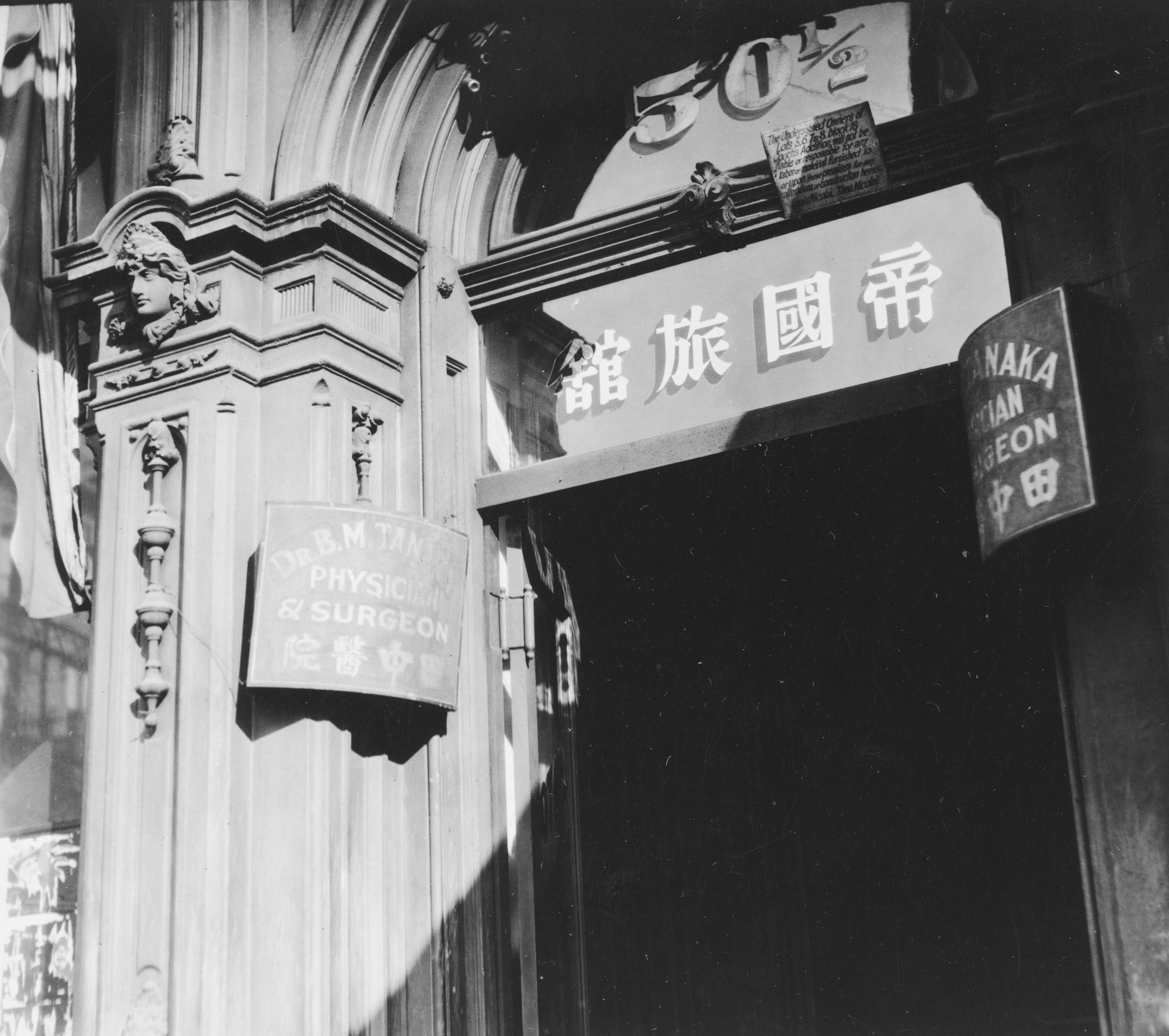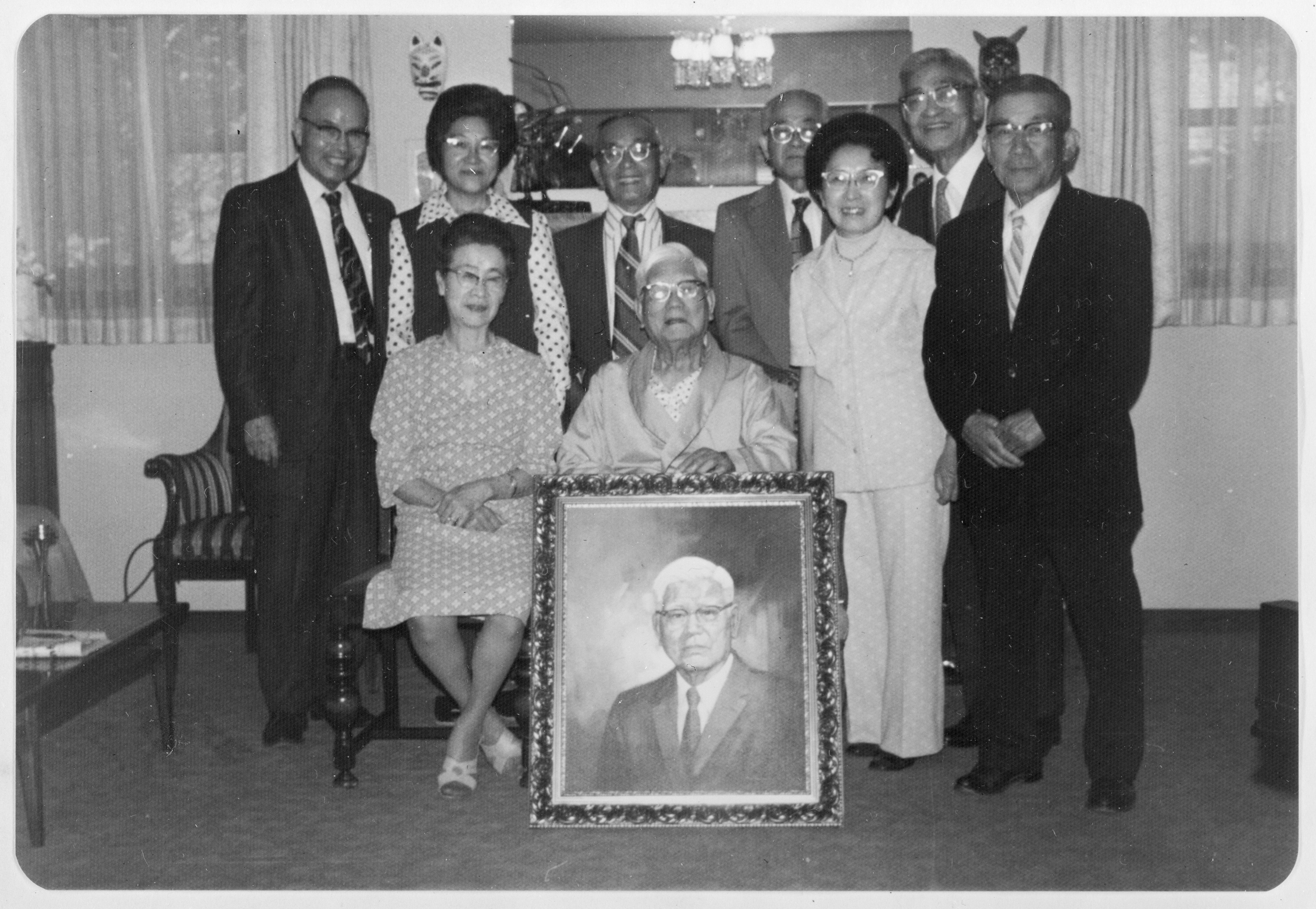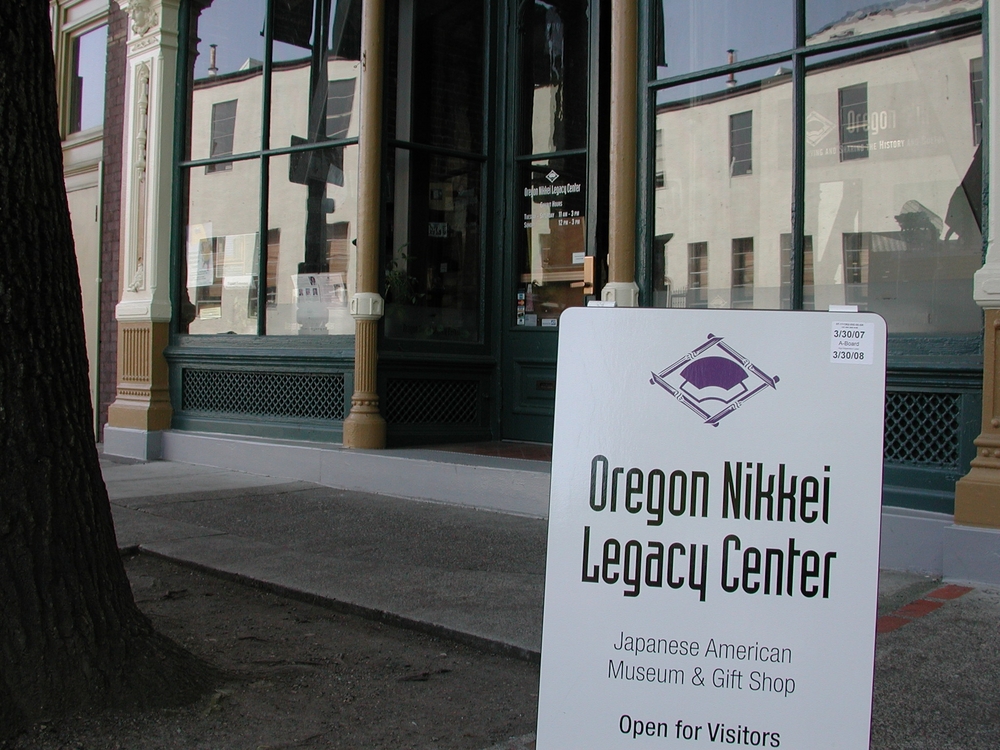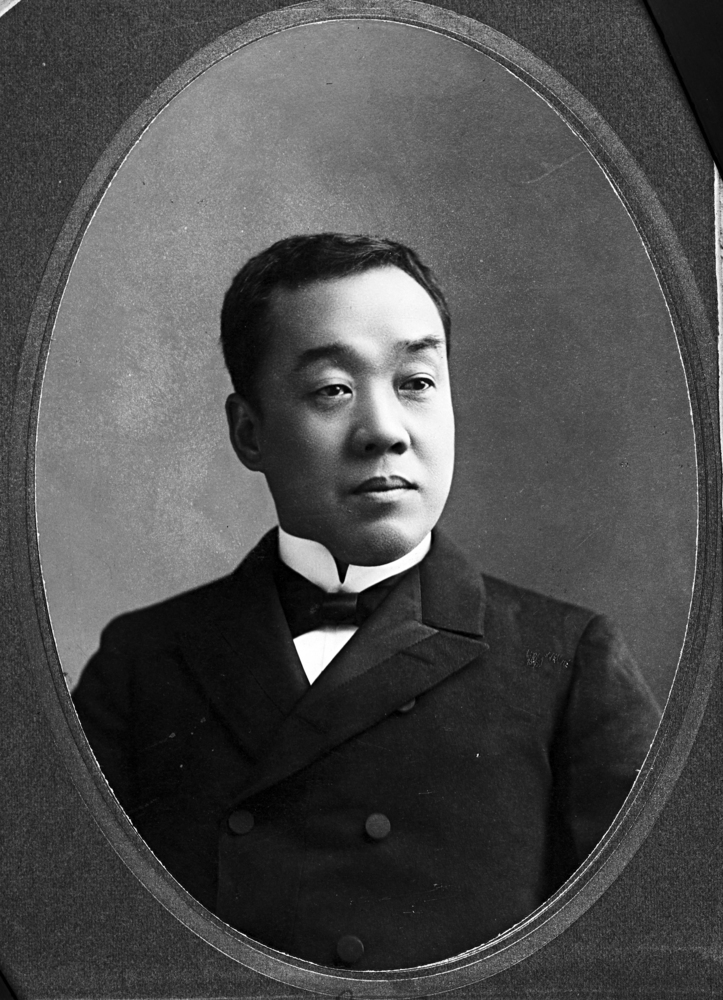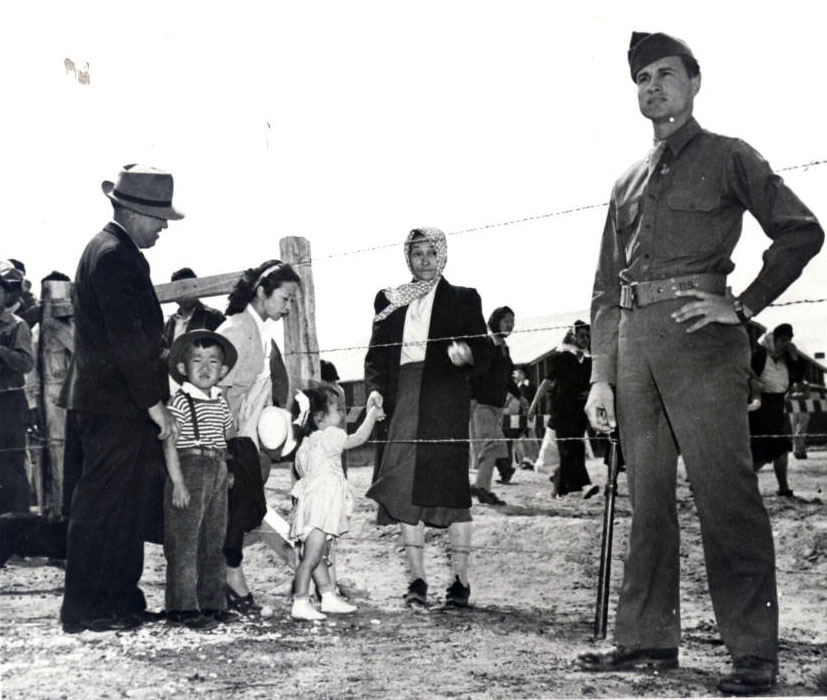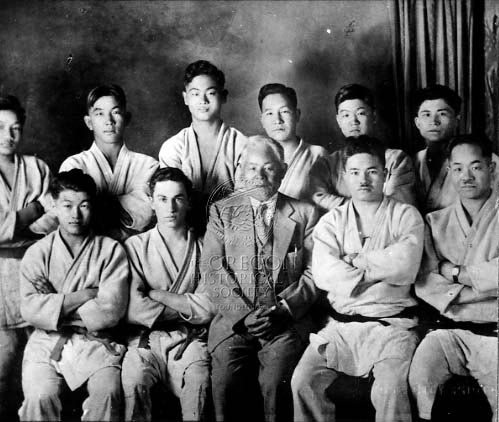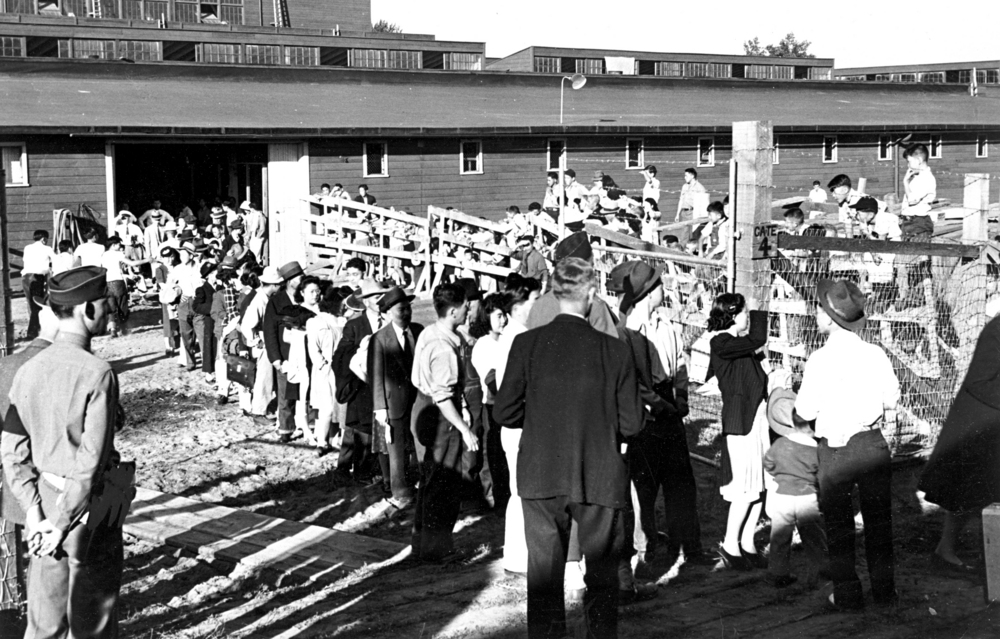Portland's Japantown, or Nihonmachi, is popularly described as having existed before World War II in the area known today as Old Town-Chinatown, between Northwest Broadway and the Willamette River. It is not widely known that Southwest Portland had a Japantown, too. Those borders were the Willamette River on the east, West Burnside Street on the north, Southwest Broadway on the west, and Southwest Montgomery Street on the south.
During the 1890s, labor contractors found jobs for Japanese immigrants on the railroads, on farms, and in the forests. Many of those immigrants were processed through Portland, creating a demand for hotels, bathhouses, laundries, and other services. Businesses that formed in the city’s Japantowns thrived in the low-rent areas near the river.
Early Japanese immigrants were mostly bachelors in their late teens or early twenties. As they matured and married, they decided to start businesses of their own. The pattern for a Japanese-operated business was to situate the private family area first. If the business was a hotel, then the family would occupy a few rooms, especially if the rooms had kitchen or bathroom facilities. If the business was a laundry, barbershop, or grocery, then the front area would be used to service customers and the back area would be the family's private living space where they would sleep, study, and eat.
The children who were old enough were taught to help with the family business, which meant it could remain open for longer hours. For example, hotels needed to be staffed twenty-four hours a day, seven days a week, so volunteer family help was needed to hold down expenses.
The kinds of small businesses in Portland's Japantowns were service-oriented for the Japanese population. The small hotels and apartments, laundries, and baths, however, also served non-Japanese retirees and pensioners who needed low-rent housing and modestly priced services (see table below for geographic distribution of businesses in Northwest and Southwest Portland).
In any city block in either of the Japantowns, there could be from one to four families, so there was ample opportunity for socializing. Friendships among the families were strong and lasting. Socializing during the New Year's observance was especially important because of the preparation and sharing of traditional Japanese delicacies. The children of Japanese families shared many common American experiences, such as attending public schools and Japanese language schools.
Those strong bonds helped families weather the hardships imposed on people of Japanese ancestry after December 7, 1941, when the government of Japan attacked Pearl Harbor, Hawaii. That act set off reactions against people of Japanese ancestry on the West Coast of the United States. The reactions were based on the long history of prejudice against Asians and people of color in the United States.
Race prejudice against Asians in the United States started with their immigration as cheap laborers. The Chinese Exclusion Act of 1882 prevented the immigration of Chinese, and in 1924 the Federal Immigration Law was changed to exclude Japanese. The Naturalization act of 1790 provided for the naturalization of any alien being a free white person. This prevented immigrant Chinese from becoming naturalized American citizens until 1943 when China declared war on Japan. In 1952 the Walter McCarran Act eliminated race as a bar to naturalization, so Japanese became eligible. There were Alien Land Laws in Oregon, Washington, California, Idaho, and Arizona that prevented land purchases by aliens ineligible for citizenship.
After the attack on Pearl Harbor, Japanese in Portland experienced overt demonstrations of hate. In public places, people stared, sneered, spat, and called out "You Dirty Jap." Some stores posted signs that read "No Japs Allowed." These acts were perpetrated against American citizens and legal resident aliens who happened to be of Japanese ancestry.
On February 19, 1942, President Franklin D. Roosevelt signed Executive Order 9066, authorizing the U.S. government to issue exclusion orders in neighborhoods where Japanese lived and to order them into confinement. From May 1 to May 4, Portland's Japantowns became ghost towns, as the inhabitants, both immigrants and Japanese American citizens, surrendered to detention at the Pacific International Livestock and Exposition Center (now known as the Expo Center). Renamed the Portland Assembly Center, it was the first point of internment for the Japanese population of Portland and vicinity. The 3,676 people held at the Assembly Center included Japanese from around Portland and southeast Washington.
In 1945, some former Portlanders returned to the city. Starting over was not easy. Race prejudice still existed, jobs were denied, and housing was hard to find. Former teachers and classmates were warm and welcoming or unfriendly and distant. Many former Portlanders relocated from internment to places away from the West Coast.
It the years since returning to Portland, former internees have become very senior citizens. Many dedicated their time to build the Japanese American Historical Plaza and to create the Oregon Nikkei Legacy Center. These are projects of Oregon Nikkei Endowment, Inc., which preserves the history of the Japanese in Oregon, including the history of Japantown. Both projects are located in and are adjacent to the old Japantown.
Japanese businesses in both Portland Japantowns, around 1940 just prior to World War II, included a variety of services that made the neighborhoods vital and economically diverse. There were: eighty-six hotels and apartments; seven tailors; fourteen restaurants; twelve barbershops; eighteen laundries and baths; eight groceries; five gift shops; two transfer companies; three medical doctors; four dentists; four newspapers; two general merchandise stores; two confections and candy shops; two pool halls; one garage; two photographers; two carpenters; one tire shop; two drugstores; one jeweler.
-
![Door to office of Dr. Benjamin Tanaka, NW 3rd St., Portland, about 1930.]()
Tanaka, Benjamin, Portland office, ca 1930, bb008363.
Door to office of Dr. Benjamin Tanaka, NW 3rd St., Portland, about 1930. Oreg. Hist. Soc. Research Libr., bb008363
Related Entries
-
![Benjamin Tanaka (1887-1975)]()
Benjamin Tanaka (1887-1975)
Benjamin Tanaka was a prominent physician in Portland’s Japantown in th…
-
![Japanese American Historical Plaza (Portland)]()
Japanese American Historical Plaza (Portland)
Using thirteen engraved stones of basalt and granite, the Japanese Amer…
-
Japanese American Museum of Oregon
The Japanese American Museum of Oregon is in Portland’s Old Town, the h…
-
![Japanese Americans in Oregon]()
Japanese Americans in Oregon
Immigrants from the West Resting in the shade of the Gresham Pioneer C…
-
![Japanese American Wartime Incarceration in Oregon]()
Japanese American Wartime Incarceration in Oregon
Masuo Yasui, together with many members of Hood River’s Japanese commun…
-
![Obukan Judo Dojo]()
Obukan Judo Dojo
Obukan Judo, the oldest dōjō in Oregon, has had a presence in Portland …
-
![Portland Temporary Detention Center (Portland Assembly Center)]()
Portland Temporary Detention Center (Portland Assembly Center)
From May 2 to September 10, 1942, an eleven-acre building on the south …
-
![Shinzaburo Ban (1854-1926)]()
Shinzaburo Ban (1854-1926)
Shinzaburo Ban was a Japanese businessman who was instrumental in bring…
Related Historical Records
Map This on the Oregon History WayFinder
The Oregon History Wayfinder is an interactive map that identifies significant places, people, and events in Oregon history.
Further Reading
"Nihonmachi: Portland's Japantown." www.discovernikkei.org/en/nikkeialbum/albums/44/.
Azuma, Eiichiro. "A History of Oregon's Issei, 1880-1952." Oregon Historical Quarterly 94:4 (Winter 1993/1994), 315-367.
Katagiri, George. Nihonmachi: Portland's Japantown Remembered. Portland: Oregon Nikkei Legacy Center, 2002.

